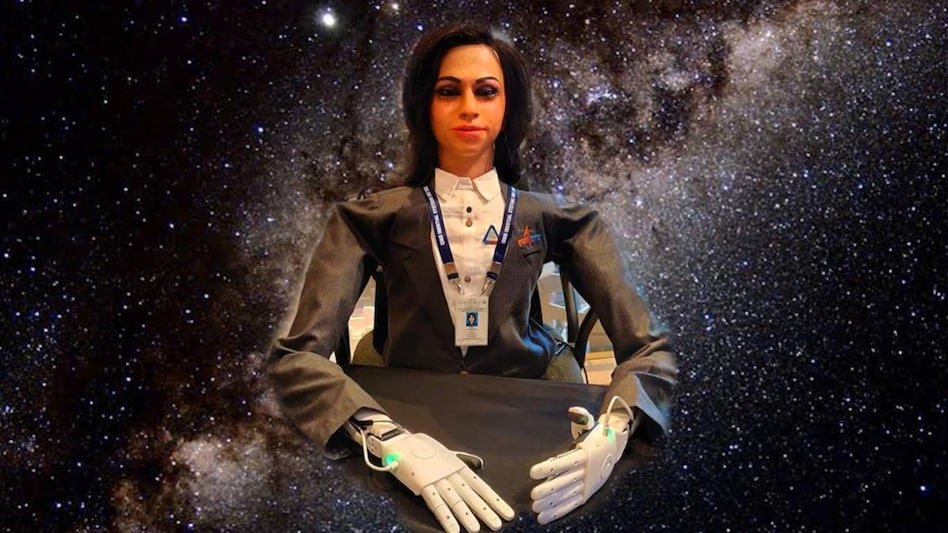Launch of Vyommitra, a female spacefaring humanoid robot : ISRO is sending on Gaganyaan mission


Report manpreet singh
Vyommitra is equipped with the capability to monitor module parameters, issue alerts, and execute life support operations.
Raipur chhattisgarh VISHESH Vyommitra can perform tasks such as operating switch panels and serving as a companion to astronauts, engaging in conversations, recognising them, and responding to their inquiries.
Singh noted that the Navy has already initiated practice operations for the module’s recovery during a felicitation program for ISRO engineers who contributed to the Chandrayaan-3 and Aditya L-1 missions.
Jitendra Singh, the Union Minister of State for Space, recently announced that trials for the Gaganyaan missions by the Indian Space Research Organisation (ISRO) are scheduled to commence later in October. He also revealed that the second phase of this mission will involve the launch of Vyommitra, a female spacefaring humanoid robot.
Vyommitra, a name derived from the Sanskrit words “Vyoma” (meaning “Space”) and “Mitra” (meaning “Friend”), will function as a prototype for the Gaganyaan missions. This half-humanoid entity made its debut during the opening session of the 2021 event titled ‘Human Spaceflight and Exploration – Present Challenges and Future Trends.’
Vyommitra is equipped with the capability to monitor module parameters, issue alerts, and execute life support operations. It can perform tasks such as operating switch panels and serving as a companion to astronauts, engaging in conversations, recognising them, and responding to their inquiries. This half-humanoid is designed to simulate human functions in the space environment and interact with the life support system.
The Gaganyaan mission, part of the broader Gaganyaan project, aims to demonstrate India’s human spaceflight capabilities by sending a crew of three members into orbit at an altitude of 400 kilometres for a three-day mission. The mission will culminate with their safe return to Earth, landing in the Indian sea waters.
The project is being realised through a comprehensive approach, drawing upon in-house expertise, the experience of the Indian industry, the intellectual resources of Indian academia and research institutions, and cutting-edge technologies available from international agencies. Essential prerequisites for the success of the Gaganyaan mission encompass the development of critical technologies, including a human-rated launch vehicle for safely transporting the crew into space, a life support system to create an Earth-like environment for the crew in space, provisions for crew emergency escape, and the evolution of crew management protocols for training, recovery, and rehabilitation.
Numerous precursor missions have been planned to demonstrate the Technology Preparedness Levels before the actual Human Space Flight mission takes place. These demonstrator missions encompass the Integrated Air Drop Test (IADT), Pad Abort Test (PAT), and Test Vehicle (TV) flights. The safety and reliability of all systems will be rigorously tested in unmanned missions prior to embarking on manned missions.
The Indian Space Research Organisation (ISRO) is poised to commence a series of preliminary test flights in preparation for the Gaganyaan mission on October 21, as announced by Science and Technology Minister Jitendra Singh on Tuesday.The inaugural test, known as the Test Vehicle Development Flight (TV-D1), will take place at the Satish Dhawan Space Centre in Sriharikota, Andhra Pradesh. This critical phase aims to assess the crew module designated for the upcoming Indian astronaut mission, scheduled for late next year.
The Gaganyaan project’s objective is to demonstrate India’s human spaceflight capability by launching a crew into a 400 km orbit and bringing them back safely to Earth by landing in the waters of the Indian sea.The project’s success relies on a meticulous approach that leverages India’s internal expertise, the experience of its industrial sector, the intellectual capabilities of its academic and research institutions, and cutting-edge technologies available through international collaborations. Key prerequisites for the Gaganyaan mission encompass the development of critical technologies, including a human-rated launch vehicle to safely transport the crew into space, a Life Support System to create an Earth-like environment for the crew in space, provisions for crew emergency escape, and the evolution of crew management aspects related to training, recovery, and rehabilitation
